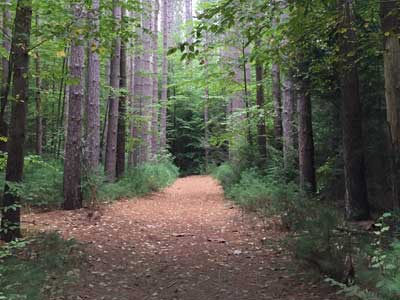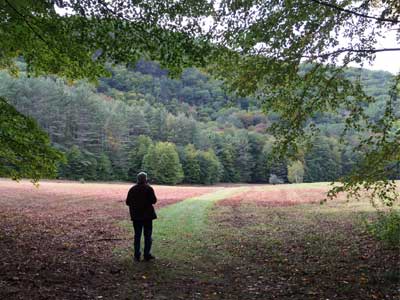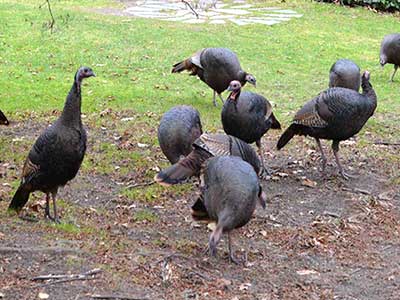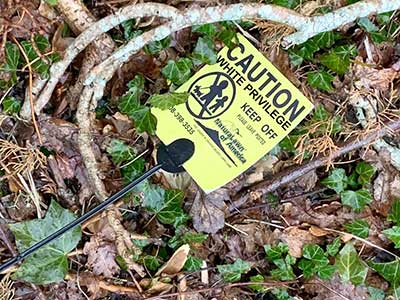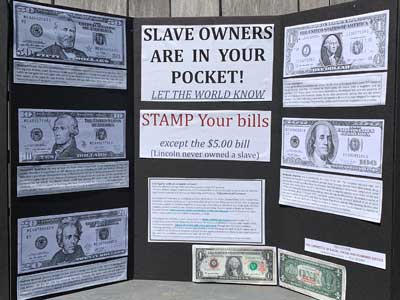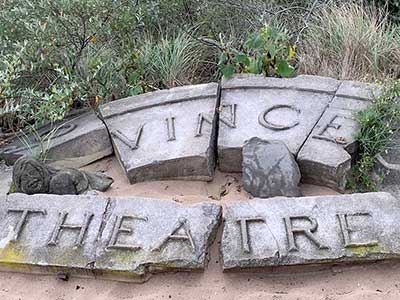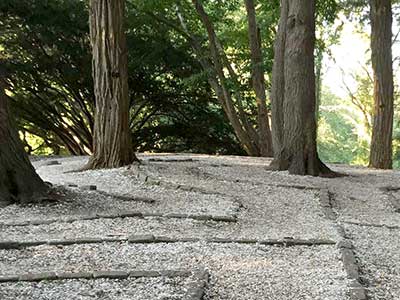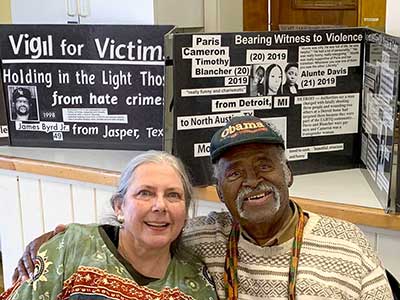by MPR News |June 2021
Tuesday marks the 100th anniversary of the Tulsa Race Massacre. Mobs of white residents, many of them deputized and given weapons by city officials, attacked Black residents and businesses of the Greenwood District in Tulsa, Oklahoma. It has been called the single worst incident of racial violence in American history. Racial incidents make headlines year after year in the United States. We are a society made up of all the races and ethnicities on the planet, and we have a painful history of exploitation and oppression tied to race. What we don’t often consider is where the idea of different races came from. God? Nature? Or was it man-made? — and if so, why? “The Invention of Race,” a documentary produced and hosted by John Biewen, explores how these concepts developed from the ancient world to today. …
One history professor says the invention of race came later, tracing it back to a surge of African slaves being brought to Europe in the 1600s.
TAGS: [Collective Action] [2020’s] [History] [Silencing POC] [Slavery] [Systemic Racism] [White Supremacy] [White Culture] [White Privilege] [Social Justice]
Resource Links Tagged with "Silencing POC"
Is America Ready to Face the Truth About the Atrocities Against Indigenous Children?
by Nick Martin | June 2021
Deb Haaland is pushing for a federal reckoning with what the U.S. did to Native Americans. But she cannot be alone in her mission.
On Tuesday, Interior Secretary Deb Haaland revealed at the National Congress of American Indians’ annual midyear conference that the federal government, led by her department, will “undertake an investigation of the loss of human life and the lasting consequences” of federal Indian boarding schools. The announcement comes on the heels of a continent-shaking discovery made three weeks ago by the Tk’emlúps te Secwépemc First Nation, which found the remains of 215 Indigenous children buried in a mass grave outside of Kamloops Indian Residential School in British Columbia, Canada. That horrific announcement was followed by another on Wednesday evening, when Cowessess First Nation revealed that it had discovered 751 unmarked graves at Marieval Indian Residential School in Saskatchewan.
TAGS: [Racial Terrorism] [2020’s] [Indigenous] [Politics] [Systemic Racism] [Accountability] [History] [Silencing POC] [White Supremacy] [White Culture] [Economics] [Justice System]
The Reasons Teachers Are Punished for Saying Black Lives Matter; Multiple Teachers in the United States Have Been Punished for Acknowledging the Existence of Systemic Racism in Their Classrooms.
by Emma Ockerman | June 2021
Over the past year, a number of teachers in the United States have been punished for daring to acknowledge the existence of systemic racism in a country with a legacy of enslaving, segregating, and disproportionately jailing Black people. From Florida to Massachusetts to Texas, educators have reportedly faced retaliation such as reassignment, backlash from parents, and even administrative leave over actions like refusing to take down a Black Lives Matter flag and telling students that “many cops are racist.”
TAGS: [Collective Action] [2020’s] [Systemic Racism] [Policing] [Black Lives Matter] [CRT] [Teachers] [Politics] [Denial] [Silencing POC]
‘60 Minutes’ Ran an Episode about Algorithm Bias. Only White Experts Were Given Airtime.
by Julianne McShane | June 2021
The episode renewed calls to #CiteBlackWomen, many of whom have been leading research on AI bias. The 13-minute-long segment, which aired May 16, reported on how facial recognition technologies have led to the wrongful arrests of Black men. It featured interviews with two White experts in facial recognition technologies as well as two Black men who were wrongfully arrested based on faulty facial recognition. Joy Buolamwini, an artificial intelligence bias researcher at Massachusetts Institute of Technology and a Black woman, was not featured in the episode after spending what she said were between eight and 10 hours working with “60 Minutes” producers over the course of a few months, recommending research to incorporate and even building a custom demo program showing how facial recognition technologies analyze faces, she said.
TAGS: [Strategies] [2020’s] [Policing] [Systemic Racism] [Justice System] [Prison System] [Social Justice] [Silencing POC] [Implicit Bias] [White Culture] [White Blindness]
The Battle for Mount Rushmore: ‘It Should be Turned into Something like the Holocaust Museum’
by Annette McGivney | July 2021
The national memorial draws nearly 3 million visitors a year – and Native Americans want the site back with a focus on oppression.
Mount Rushmore national memorial draws nearly 3 million visitors a year to its remote location in South Dakota. They travel from all corners of the globe just to lay their eyes on what the National Park Service calls America’s “shrine of democracy”. Phil Two Eagle is not opposed to the fact that the giant sculpture of American presidents is a major tourist attraction but he thinks the park should have a different focus: oppression. “It should be turned into something like the United States Holocaust Museum,” he said. “The world needs to know what was done to us.” Two Eagle noted what historians have also documented. Hitler got some of his genocidal ideas for ethnic cleansing from 19th and early 20th century US policies against Native Americans.
TAGS: [Strategies] [2020’s] [Indigenous] [History] [Systemic Racism] [Denial] [Silencing POC] [Politics] [Social Justice] [Policing] [Economics]
Black America’s Neglected Origin Stories
by Annette Gordon-Reed | June 2021
The history of Blackness on this continent is longer and more varied than the version I was taught in school. Origin stories matter, for individuals, groups of people, and nations. They inform our sense of self, telling us what kind of people we believe we are, what kind of nation we believe we live in. They usually carry, at least, a hope that where we started might hold the key to where we are in the present. We can say, then, that much of the concern over origin stories is about our current needs and desires, not actual history. Origin stories seek to find the familiar, or the superficially familiar—memory, sometimes shading into mythology. Both memory and mythology have their uses, even if they must be separated from the facts of the past. But in the case of Black people, the limitations of the history and possibility of our origin stories have helped create and maintain an extremely narrow construction of Blackness.
TAGS: [Assumptions] [2020’s] [History] [Myths] [Civil War] [Slavery] [Indigenous] [Black Lives Matter] [White Supremacy] [White Culture] [White Blindness] [Systemic Racism] [Silencing POC] [CRT]
“Kill Every Buffalo You Can!” On the Cruelties of Colonial Power
by Rupa Marya and Raj Patel | August 2021
In the war on the Indigenous people of the Great Plains, the United States explicitly targeted the buffalo, their spiritual cornerstone and staple of food, medicine, shelter, and clothing. Toward the end of the 19th century, the US military sponsored the killing of millions of buffalo, inflicting starvation and dependency on the tribes. While it was never officially announced as the army’s policy, the Montana land baron Granville Stuart noted in his journal in 1879 that “slaughtering the buffaloes is a government measure to subjugate the Indians.” Colonel Richard Irving Dodge summed up the spirit of the massacre: “Kill every buffalo you can! Every buffalo dead is an Indian gone.” Before 1800, an estimated 30 to 60 million buffalo ranged the Great Plains. By 1900, only a few hundred remained, the survivors of the most violent genocide of any mammal ever documented. With the buffalo gone, Plains Indians’ bodies suffered trauma, cultural erasure, and starvation. Depression, diabetes, and drug dependency became endemic—all diseases characterized by chronic inflammation.
TAGS: [Racial Terrorism] [2020’s] [Indigenous] [Silencing POC] [Systemic Racism] [White Supremacy] [White Culture] [White Privilege] [History] [Asian] [Health Disparities] [Economics]
The Racist Roots of American Policing: From Slave Patrols to Traffic Stops
by The Conversation | Updated June 2020
Outrage over racial profiling and the killing of African Americans by police officers and vigilantes in recent years helped give rise to the Black Lives Matter movement. But tensions between the police and black communities are nothing new. There are many precedents to the Ferguson, Missouri protests that ushered in the Black Lives Matter movement. Those protests erupted in 2014 after a police officer shot unarmed 18-year-old Michael Brown; the officer was subsequently not indicted.
TAGS: [Racial Terrorism] [2020’s] [Systemic Racism] [Implicit Bias] [Slavery] [History] [Policing] [Police Shootings] [Black Lives Matter] [-ing While Black] [White Supremacy] [White Culture] [White Privilege] [Silencing POC] [Civil War] [Justice System]
When White People Stonewall; If White People Really Care about Their Relationships with BIPOC, They Need to Learn to Discuss Racism in an Open and Honest Way
by Savannah Worley | September 2021
I had a short romantic relationship with a white guy. He was cute, funny, and he didn’t get insecure when I helped him beat certain bosses in video games. But when I opened up to him about my past experiences with racism, he responded in ways a lot of white men do. “Well, I’m Irish! We suffered discrimination too!” “I experienced bullying in school because I wore glasses.” “Are you sure what you experienced was racism?” “I’m poor, so I can’t have privilege.”
I eventually sat him down and tried to educate him on white supremacy and white privilege (even though he could have done his own research). After I was done, all he said was, “Okay.” That was it. He didn’t engage in the discussion at all. I was left feeling unheard and ignored. Shortly after our discussion, he started to make jokes about slavery and started calling me his “sassy Black lady.” Among other reasons, I decided to dump him. His being cute and funny just wasn’t enough for me.
TAGS: [Individual Change] [2020’s] [Systemic Racism] [“All Lives Matter”] [White Defensiveness] [White Privilege] [White Blindness] [White Fragility/Tears] [Microaggressions] [Implicit Bias] [White Supremacy] [Silencing POC]
Uncovering Indigenous Worlds and Histories on a Bend of a New England River before the 1650s: Problematizing Nomenclature and Settler Colonial History, Deep History, and Early Colonization Narratives
by Christoph Strobel | February 2022
The essay explores the often-ignored histories of the indigenous people who resided on the confluence of the Merrimack and the Concord rivers up to the 1650s. This place is characterized by a significant bend in the Merrimack River as it changes its southerly flow into an easterly direction. Today, the area includes the modern city of Lowell, Massachusetts, and its surroundings. While the 1650s saw the creation of a Native American “praying town” and the incorporation of the Massachusetts Bay Colony’s towns of Chelmsford and Billerica, it is the diverse and complex indigenous past before this decade which North American and global historians tend to neglect. The pre-colonial and early colonial eras, and how observers have described these periods, have shaped the way we understand history today. This essay problematizes terminology, looks at how amateur historians of the 19th and early 20th centuries have shaped popular perceptions of Native Americans, and explores how researchers have told the history before the 1650s. The materials available to reconstruct the history of the region’s Native Americans are often hard to find, a common issue for researchers who attempt to study the history of indigenous peoples before 1500. Thus, the essay pays special attention to how incomplete primary sources as well as archeological and ethnohistorical evidence have shaped interpretations of this history and how these intellectual processes have aided in the construction of this past.
TAGS: [Strategies] [2020’s] [Indigenous] [History] [Systemic Racism] [Implicit Bias] [Myths] [Politics] [Slavery] [White Supremacy] [White Culture] [Silencing POC] [Health Disparities] [Economics]
America’s Gun Obsession is Rooted in Slavery; A Series of Slave Revolts Terrified White Residents and Helped Fuel the Rationale for Gun Ownership
by Carol Anderson | June 2021
For too long, the second amendment has been portrayed with a founding fathers aura swaddled in the stars and stripes. But “a well-regulated militia” wasn’t, as the story goes, about how valiant and effective the militias were in repelling the British. George Washington was disgusted with their lack of fighting ability and the way the men would just cut and run from battling against a professional army. Nor was the militia reliable as a force to uphold the law. In Shays’ Rebellion, bands of armed white men, who were in the state’s militia, attacked the Massachusetts government because of foreclosures and debt seizures, demonstrating, again, how unreliable the militia were. Boston merchants had to hire mercenaries to put down the rebellion.
On the other hand, where the militia had been steadfast was in controlling the enslaved Black population. Access to guns for white people was essential for this function.
TAGS: [Racial Terrorism] [2020’s] [Economics] [Justice System] [White Supremacy] [White Culture] [White Privilege] [Politics] [White Blindness] [White Defensiveness] [History] [Black Lives Matter] [Social Justice] [Systemic Racism] [Slavery] [Policing] [Silencing POC]
More than 1,700 Congressmen Once Enslaved Black People. This Is Who They Were, and How They Shaped the Nation.
by Julie Zauzmer Weil, Adrian Blanco and Leo Dominguez| January 2022
From the founding of the United States until long after the Civil War, hundreds of the elected leaders writing the nation’s laws were current or former slaveowners. More than 1,700 people who served in the U.S. Congress in the 18th, 19th and even 20th centuries owned human beings at some point in their lives, according to a Washington Post investigation of censuses and other historical records.
TAGS: [Racial Terrorism] [2020’s] [Civil War] [Slavery] [Politics] [Systemic Racism] [White Supremacy] [White Culture] [White Privilege] [White Blindness] [Justice System] [History] [Black Lives Matter] [Silencing POC] [Confederate Monuments] [Indigenous]
Police Abuse Complaints by Black Chicagoans Dismissed Nearly 99 Percent of the Time; Investigators Rarely Sustain Allegations of Any Kind
by Shane Shifflett, Alissa Scheller, Scilla Alecci and Nicky Forster | December 2015
Long before Chicago police Officer Jason Van Dyke shot and killed a black teenager, sparking a public outcry and now a Justice Department probe into the city’s troubled police department, he had established a track record as one of Chicago’s most complained-about cops. Since 2001, civilians have lodged 20 complaints against Van Dyke. None were sustained by investigators. While it may seem surprising that so many complaints against one officer would be tossed out, a Huffington Post analysis of four years of city data released by the Invisible Institute, a nonprofit journalism organization, reveals that there are more than 180 city police officers with more complaints than Van Dyke who weren’t disciplined at all over that time. Most of those complaints were made by black residents, whose allegations of police misconduct are dismissed at nearly four times the rate of complaints filed by whites, HuffPost found.
TAGS: [Racial Terrorism] [2010’s] [Police Shootings] [Policing] [Black Lives Matter] [Justice System] [Silencing POC] [Denial] [Accountability] [Systemic Racism] [-ing While Black]
Federal Government Investigating Delayed Benefits For Black Veterans; The Study Will Look for Disparities Associated with Race in Black Veterans Receiving Benefits
by Noah A. McGee | December 2021
It took one Black military veteran 45 years to get his benefits. Yes, you read that right. It took four decades to get what was due to him. War veterans have always struggled to get the benefits due to them, especially Black veterans. But now, that could all change. According to The Cullman Times, an initiative was signed that ordered the Government Accountability Office to perform a study “to assess disparities associated with race and ethnicity in veterans receiving benefits from the Department of Veterans Affairs.” It will be led by Senator Raphael Warnock. Unfortunately, it had to take a measure like this from the federal government for Black veterans who served our country to receive basic benefits that they fought for, but here we are.
TAGS: [Collective Action] [2020’s] [Accountability] [Politics] [Black Lives Matter] [Denial] [Silencing POC] [Systemic Racism] [Justice System] [Health Disparities]
Native Americans and Mount Rushmore
by From the Collection: Native Americans | Date Unknown
The creation of Mount Rushmore is a story of struggle — and to some, desecration. The Black Hills are sacred to the Lakota Sioux, the original occupants of the area when white settlers arrived. For some, the four presidents carved in the hill are not without negative symbolism. The Sioux have never had much luck dealing with white men. In the Treaty of 1868, the U.S. government promised the Sioux territory that included the Black Hills in perpetuity. Perpetuity lasted only until gold was found in the mountains and prospectors migrated there in the 1870s. The federal government then forced the Sioux to relinquish the Black Hills portion of their reservation.These events fit the pattern of the late 19th century, a time of nearly constant conflict between the American government and Plains Indians. At his second presidential inauguration in 1873, Ulysses S. Grant reflected the attitudes of many whites when he said he favored a humane course to bring Native Americans “under the benign influences of education and civilization. It is either this or war of extermination.” Many of the land’s original occupants did not choose to assimilate; for them war, was the only option.”
TAGS: [Strategies] [Indigenous] [Racial Terrorism] [Systemic Racism] [Silencing POC] [White Supremacy] [White Culture] [White Blindness] [Politics] [Social Justice] [History] [White Privilege] [Prison System] [Art & Culture]
Jim Crow Laws
by history.com Editors| Updated January 2022
Jim Crow laws were a collection of state and local statutes that legalized racial segregation. Named after a Black minstrel show character, the laws—which existed for about 100 years, from the post-Civil War era until 1968—were meant to marginalize African Americans by denying them the right to vote, hold jobs, get an education or other opportunities. Those who attempted to defy Jim Crow laws often faced arrest, fines, jail sentences, violence and death.
TAGS: [Racial Terrorism] [2020’s] [Systemic Racism] [Silencing POC] [Racial Covenants] [History] [Collective Action] [Denial] [Politics] [White Supremacy] [White Culture] [White Privilege] [Black Lives Matter] [Policing] [Prison System] [Housing] [Justice System] [Advocacy] [Role Model] [Definitions]
Broken System Can’t Keep Track of Native Deaths; from Medical Health Privacy Laws to a Maze of Siloed Information Systems, a True Accounting of COVID-19’s Impact on Indian Country is Impossible to Know
by Jourdan Bennett-Begaye, Sunnie Clahchischiligi, and Christine Trudeau | June 2021
In May of 2020, the Navajo Nation reported one of the highest per-capita COVID-19 infection rates in the United States. Since that milestone, official data reveals that the Navajo Nation has been one of the hardest-hit populations during the pandemic. The Navajo Nation boasts the largest population of any Indigenous nation in the United States, and thousands of Navajos live outside the nation, in towns along the border, cities across the country, and in other parts of the world, making it difficult to tally the virus’ impacts on Navajo citizens. It’s made worse by a labyrinthian system of local, state, federal and tribal data-reporting systems that often do not communicate with each other or share information.
TAGS: [Assumptions] [2020’s] [Health Disparities] [Indigenous] [Politics] [Myths] [Systemic Racism] [Silencing POC] [Denial]
The Grave of a Former Slave Turned Florida State Senator May Be Buried Under What’s Now A Tampa Parking Lot
by J.L. Cook | June 2021
As Juneteenth approaches, Tampa’s local NAACP wants the city to commit to finding the graves that once rested at College Hill Cemetery. Robert Meacham, who became a Florida state senator after being freed from slavery, is one of more than 1,200 people buried at a site that is now believed to be a parking lot for the Italian Club Cemetery in Tampa, Fla. According to the Tampa Bay Times, Meacham’s unmarked grave was located in the College Hill Cemetery for Blacks and Cubans–which has long been erased. In an effort to rectify this, the local NAACP branch in Tampa has challenged the city to commemorate Juneteenth by funding an archaeological survey of the Italian Club Cemetery lot to find out if Meacham’s body and others are there.
TAGS: [Collective Action] [2020’s] [History] [Systemic Racism] [White Culture] [White Supremacy] [White Privilege] [Politics] [Silencing POC] [Black Lives Matter] [Social Justice] [Slavery] [Accountability]
The Bloody History of Anti-Asian Violence in the West; One of the Largest Mass Lynchings in the United States Targeted Chinese Immigrants in Los Angeles
*Paywall Alert
by Kevin Waite | May 2021
This year marks the 150th anniversary of one of the largest mass lynchings in American history. The carnage erupted in Los Angeles on October 24, 1871, when a frenzied mob of 500 people stormed into the city’s Chinese quarter. Some victims were shot and stabbed; others were hanged from makeshift gallows. By the end of the night, 19 mangled bodies lay in the streets of Los Angeles.Lynching is a term most often associated with violence against African Americans in the post-Civil War South. But racial hatred has never been quarantined to one American region or confined to a single ethnic group. In Los Angeles in 1871, the victims were Chinese immigrants. Their deaths were part of a wave of anti-Asian violence that swept across the 19th-century American West—and reverberates to this day.
TAGS: [Racial Terrorism] [2020’s] [White Supremacy] [White Culture] [History] [Asian] [Systemic Racism] [White Privilege] [Silencing POC]
For Our White Friends Desiring to be Allies
by Courtney Ariel | August 2017
1. Listen more; talk less. …
2. For one out of every three opinions/insights shared by a person of color in your life, try to resist the need to respond with a better or different insight about something that you read or listened to as it relates to their shared opinion. …
3. Being an ally is different than simply wanting not to be racist (thank you for that, by the way). Being an ally requires you to educate yourself about systemic racism in this country. …
4. Please try not to, “I can’t believe that something like this would happen in this day and age!” your way into being an ally when atrocities like the events in Charleston, S.C. …
5. Ask when you don’t know — but do the work first. This is nuanced. …
6. And finally, stop talking about colorblindness.
TAGS: [Individual Change] [2010’s] [Tips-Dos/Don’ts] [Anti-Racism] [Silencing POC] [White Supremacy] [White Privilege] [Systemic Racism] [Colorblindness] [Indigenous] [Slavery] [Black Lives Matter] [Intersectionality] [Denial] [Reparations]
Private Museums Could Face NAGPRA Scrutiny; Museums and Other Institutions that Accept Stimulus Funds Could Be Required to Repatriate Indigenous Artifacts and Remains
by Nanette Kelley | May 2021
Small museums and private institutions that accept federal CARES Act money or other stimulus funds could be forced to relinquish thousands of Indigenous items and ancestral remains now in their collections.
Under the Native American Grave Protection and Repatriation Act of 1990, museums or other institutions that accept federal funding must compile an inventory of Indigenous cultural items and initiate repatriation of the collections and remains to tribes or family members. At least two museums are now facing possible scrutiny – the nonprofit Favell Museum of Native American Artifacts and Contemporary Western Art in Klamath Falls, Oregon, and the End of the Trail Museum, which is connected to the Trees of Mystery gift shop in the redwood forest in Klamath, California.
TAGS: [Assumptions] [2020’s] [Indigenous] [Art & Culture] [Silencing POC] [History] [Politics] [White Supremacy] [White Culture] [Economics] [Systemic Racism] [Advocacy] [Social Justice]
Return the National Parks to the Tribes; The Jewels of America’s Landscape Should Belong to America’s Original Peoples.
by David Treuer | April 2021
The American story of “the Indian” is one of staggering loss. Some estimates put the original Indigenous population of what would become the contiguous United States between 5 million and 15 million at the time of first contact. By 1890, around the time America began creating national parks in earnest, roughly 250,000 Native people were still alive. In 1491, Native people controlled all of the 2.4 billion acres that would become the United States. Now we control about 56 million acres, or roughly 2 percent. And yet we remain, and some of us have stayed stubbornly near the parks, preserving our attachment to them. Grand Canyon National Park encloses much of the Havasupai Tribe and its reservation. Pipe Spring National Monument sits entirely inside the 120,000-acre Kaibab Paiute Indian Reservation, in northern Arizona. Many other parks neighbor Native communities. But while the parks may be near us, and of us, they are not ours.
TAGS: [Racial Terrorism] [2020’s] [History] [Indigenous] [Systemic Racism] [White Supremacy] [White Culture] [White Privilege] [Denial] [Social Justice] [Accountability] [Environment] [Politics] [Assumptions] [Silencing POC]
Whitewashing the Great Depression; How the Preeminent Photographic Record of the Period Excluded People of Color from the Nation’s Self-Image
by Sarah Boxer | December 2020
Quick, name one iconic Depression-era portrait each by Dorothea Lange, Walker Evans, and Russell Lee. My guess is that you’d choose Lange’s Migrant Mother, a portrait of Florence Owens Thompson and her children taken in Nipomo, California, in 1936. For Evans, you’d probably pick a 1936 portrait of tight-lipped Allie Mae Burroughs standing before the wall of her family’s cabin in Hale County, Alabama. For Lee, you might draw a blank, but you’d likely recognize his 1937 group portrait Saturday Night in a Saloon, showing four drinkers in Craigville, Minnesota. (It was used in the opening sequence of the TV show Cheers.)
TAGS: [Assumptions] [2020’s] [Silencing POC] [White Culture] [White Privilege] [White Supremacy] [Art & Culture] [History] [Systemic Racism] [White Defensiveness] [Politics] [Denial]
Nulhegan Abenaki Post Statement on Abenaki Ethnocide
Posted on the website of the Nulhegan Band of the Coosuk-Abenaki Nation | January 2021
The Indigenous Abenaki people of the Northeast have, for generations, been subjected to both genocidal attacks (killing of people) and ethnocidal attacks (killing of culture) by colonial settlers and their descendants. In the colonial era, these threats took the form of murderous attacks on families and villages in war-time. In the modern era, these threats have included eugenic sterilization [http://www.uvm.edu/~lkaelber/eugenics/VT/VT.html], forced separations of children and families, misrepresentations of history, and other attacks that the United Nations classifies as “ethnocide.” By definition, ethnocide includes both a “mental element” – “the intent to destroy” – and a “physical element” – when perpetrators deliberately take actions to cause “serious bodily or mental harm” [https://www.un.org/en/genocideprevention/genocide.shtml].
TAGS: [Strategies] [2020’s] [Indigenous] [White Supremacy] [White Culture] [White Privilege] [Systemic Racism] [Silencing POC] [Racial Terrorism] [History] [Social Justice]
158 Resources to Understand Racism in America
by Meilan Solly | June 2020
Amid escalating clashes between protesters and police, discussing race—from the inequity embedded in American institutions to the United States’ long, painful history of anti-black violence—is an essential step in sparking meaningful societal change. To support those struggling to begin these difficult conversations, the Smithsonian’s National Museum of African American History and Culture recently launched a “Talking About Race” portal featuring “tools and guidance” for educators, parents, caregivers and other people committed to equity. “Talking About Race” joins a vast trove of resources from the Smithsonian Institution dedicated to understanding what Bunch describes as America’s “tortured racial past.” From Smithsonian magazine articles on slavery’s Trail of Tears and the disturbing resilience of scientific racism to the National Museum of American History’s collection of Black History Month resources for educators and a Sidedoor podcast on the Tulsa Race Massacre, these 158 resources are designed to foster an equal society, encourage commitment to unbiased choices and promote antiracism in all aspects of life. Listings are bolded and organized by category.
TAGS: [Collective Action] [2020’s] [Systemic Racism] [Anti-Racism] [Policing] [Teachers] [History] [Intersectionality] [Slavery] [Racial Terrorism] [Black Lives Matter] [Civil War] [Politics] [Social Justice] [Racial Covenants] [Housing] [Employment] [Economics] [Silencing POC] [Health Disparities] [Prison System] [Implicit Bias] [Indigenous] [Police Shootings] [Latino/a] [White Supremacy] [White Culture]
What Women’s Suffrage Owes to Indigenous Culture
by Briget Quinn | August 2020
It’s an under-known fact that the “revolutionary” concept of a democratic union of discrete states did not spring fully formed from the Enlightenment pens of the Founding Fathers, like sage Athena from the head of Zeus. No, the idea of “united states” sprang from the Haudenosaunee, collective name for six tribes that comprise the so-called (mostly by non-Natives) Iroquois Confederacy: the Seneca, Oneida, Mohawk, Onondaga, Cayuga, and Tuscarora nations. Should you doubt this, check out Congressional Resolution 331, adopted in 1988 by the 100th Congress of the United States, which says as much. It’s worth noting that the Haudenosaunee Confederacy still thrives today, likely the world’s oldest participatory democracy.
TAGS: [Assumptions] [2020’s] [Collective Action] [History] [Indigenous] [Myths] [Politics] [Silencing POC] [Systemic Racism] [White Blindness] [White Culture] [White Fragility/Tears] [White Privilege] [White Supremacy]
The Crimson Klan
by Simon J. Levien | March 2021
When J. Max Bond Jr. ’55 entered Harvard at the age of 16, he was among 15 Black students in his class, most of whom lived in the north corner of Harvard Yard. As his freshman spring semester began, two other Harvard freshmen erected a wooden cross facing that corner of the Yard, formed by Stoughton and Holworthy Halls. And around midnight on Feb. 5, 1952, the students lit the cross on fire… Post-Harvard, Bond became one of a few prominent Black architects in the 20th century. After his death in 2009, his widow, Jean Carey Bond, released an 11-page retelling of his life. In it, Jean reveals that the University threatened Bond or any Black student with suspension should they go to the media with the cross burning. Bond, who graduated Phi Beta Kappa and finished undergrad in three years, was never suspended.
TAGS: [Racial Terrorism] [2020’s] [Systemic Racism] [Silencing POC] [White Supremacy] [White Culture] [White Privilege] [White Defensiveness] [History] [Slavery] [Denial] [Social Justice]
How Native Americans Were Vaccinated Against Smallpox, Then Pushed Off Their Land; Nearly Two Centuries Later, Many Tribes Remain Suspicious of the Drive to Get Them Vaccinated Against the Coronavirus
by Dana Hedgpeth | March 2021
More than 180 years ago, the federal government launched the largest effort of its kind in the United States to vaccinate Native Americans against the deadly disease of smallpox… In 1832, Congress passed legislation — the Indian Vaccination Act — that allowed the federal government to use about $17,000 to hire doctors to vaccinate Native Americans who were living near White frontier settlements. Many White settlers feared that Indians would spread the disease to them. “It wasn’t in the interest of Indian people,” said Pecos, who is also co-director of the Leadership Institute at the Santa Fe Indian School. “It was a way of vaccinating them to move them so White Americans could move them into Western lands.”
TAGS: [Strategies] [2020’s] [Indigenous] [Health Disparities] [Politics] [Social Justice] [Systemic Racism] [Racial Terrorism] [Definitions] [White Supremacy] [White Culture] [White Privilege] [Silencing POC] [History]
For White Allies on Black History and Slavery in the U.S.
(posted) by Paula M. Fitzgibbons | Date Unknown
Black history month is about so much more than slavery, but in the U.S., Black history and slavery are inseparable. And sadly, many of us still don’t have an adequate education on the topic. I’m always flabbergasted when I hear people say that Black Americans need to “get past” slavery. “It wasn’t us,” they say. “That happened hundreds of years ago. Get over it already.” It’s clear to me that these people don’t fully grasp the horror of American slavery, how long it lasted, and what happened after it. They also don’t seem to understand how severe trauma works.
TAGS: [Collective Action] [Slavery] [Black Lives Matter] [Systemic Racism] [White Fragility/Tears] [White Culture] [White Privilege] [White Defensiveness] [White Blindness] [Social Justice] [Racial Terrorism] [Silencing POC] [History] [Denial]
Black Opera Composer Is Dismissed Over Lyrics for 100-Year Commemoration of the Tulsa Race Massacre
by Shanelle Genai | March 2021
When composer Daniel Roumain was commissioned to create an original work for “Greenwood Overcomes,” a celebration led by the Tulsa Opera to recognize the 100th anniversary of the Tulsa Race Massacre, I’m sure he never thought one lyric would be enough to lose him the commission. Unfortunately, it was. As Vulture reports, Roumain composed an aria inspired by the horrific details of the massacre titled They Still Want to Kill Us, with the last two lines reading: “God bless America/God damn America.” But when mezzo-soprano singer Denyce Graves, who was set to perform the aforementioned song, expressed concerns over those lines—Tulsa Opera asked Roumain if he would consider changing the lyrics. He said no, and now, both Roumain and his work are now no longer a part of the celebration.
TAGS: [Assumptions] [2020’s] [Silencing POC] [Systemic Racism] [History] [Art & Culture] [-ing While Black] [Black Lives Matter] [Denial] [White Defensiveness] [White Supremacy] [White Privilege] [White Blindness] [White Fragility/Tears]
